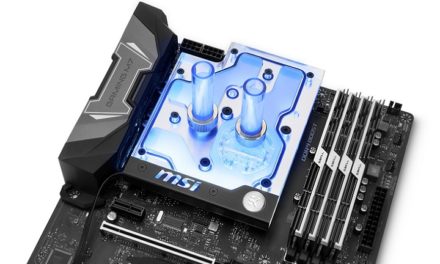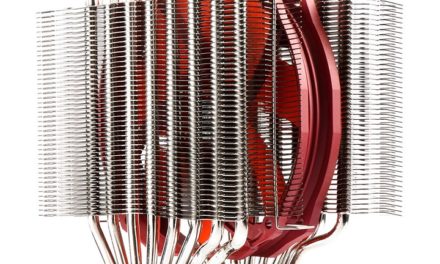
VapoChill Micro - First measurements
Today we finally had time for some measurements and we also got our first impressions of the fridge.
When you receive the package, the first impression is especially favorable, but this changes somewhat when you open the package. The first thing that stands out is that the plastic plate holding the fan is very thin. This didn’t seem very encouraging at first, as we’ve come across quite a few rattling refrigerators already. What is very positive, however, is that the rib has almost no weight. It can't be compared to today's high-performance solutions. The nickel plating of the rib is beautiful, the polishing of the sole is not so much. Installing the radiator with an AMD motherboard with the standard screw solution is two moments. However, if our motherboard is equipped with a plastic pin instead of a screw, there may be problems, but fortunately this is rare.
After mounting the rib, we are surprised to notice that we can rotate it on the processor by hand. We were a little scared that this was a sign of a bad catch, but luckily the measurements convinced us, this is so normal. The fan produces roughly 35 dBA of noise at full speed, nothing at low speed. This fact became important at the end of the test.
Well, then come the numbers. During the measurements, the room temperature was about 26-27 degrees Celsius. During the measurement, we increased the operating voltage of the processor to see how the new savior of the Asetek will cope with a higher load. The processor was an AMD Athlon 64 3400+, Socket 754, 0,13 micron instance by default, at 2400 MHz real clock. Processor factory voltage 1,525 volt.
Measurements were performed at full fan speed at the following voltages.
| 1,550 volt | 1,650 volt | 1,70 volt |
| 45 degrees Celsius | 48 degrees Celsius | 52 degrees Celsius |
As I’ve already written, we became curious about how much the fan speed affects performance, so we rolled it down to a minimum of 1,70 volts. At that point, the heat sink became essentially silent, the inscription in the middle of the fan became almost legible, but the processor temperature rose by only two degrees!
Evaluation:
After the first bad impressions, the fridge took us off our feet. The plastic does not rattle or resonate. Installation is simple and fast. There are serious reserves in the cooler, as the temperature of the processor did not rise significantly even with a drastic increase in voltage.
The manufacturer promises that their product will be able to dissipate 150 watts of heat. So in hindsight, I admit it masculine, we strongly doubted that this value could be a reality, but today’s lightning test proved that our concerns are unfounded. Of course, the real watershed will be testing with Prescott core processors, but based on today’s experience, we are already looking forward to this..














